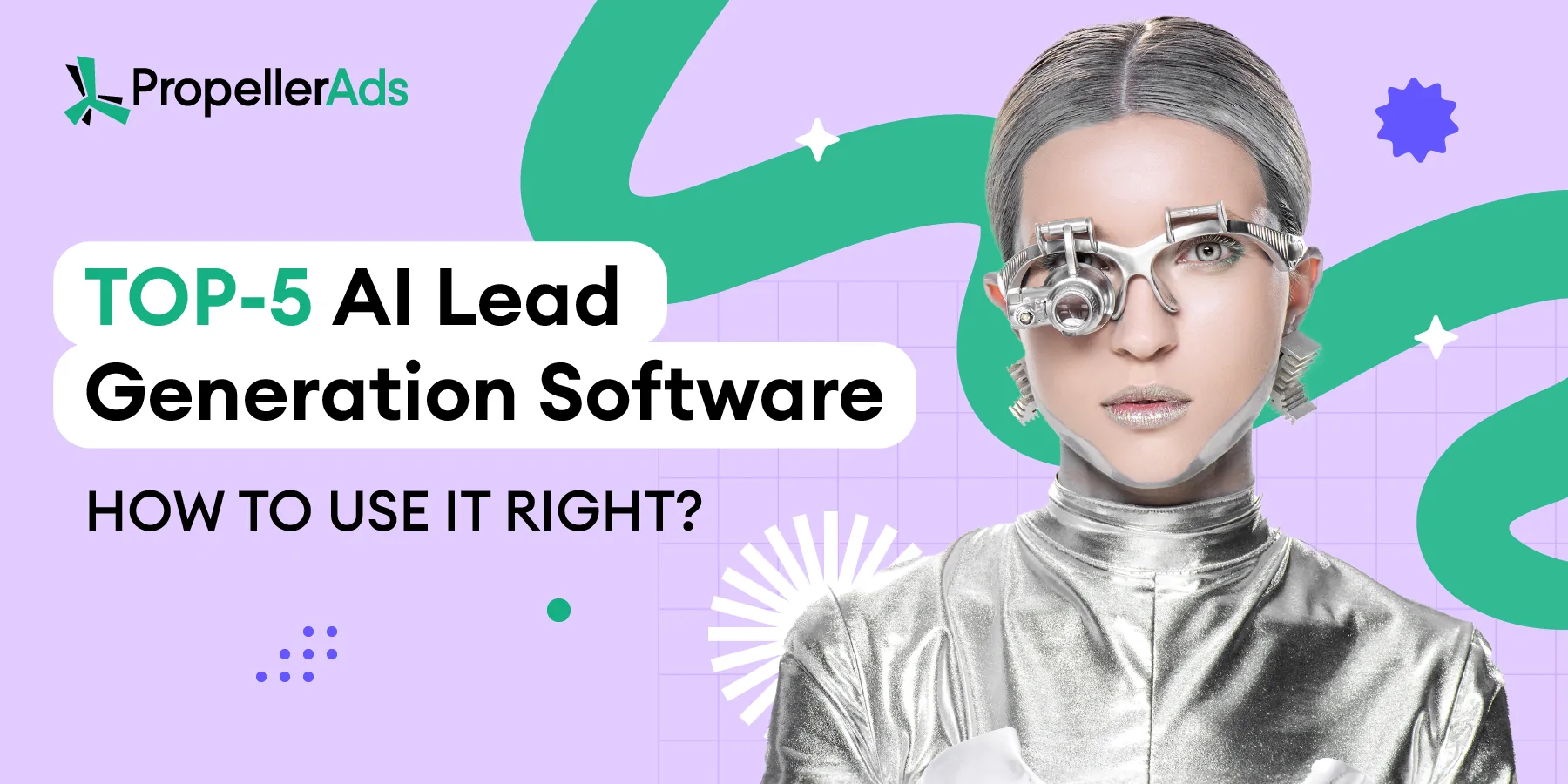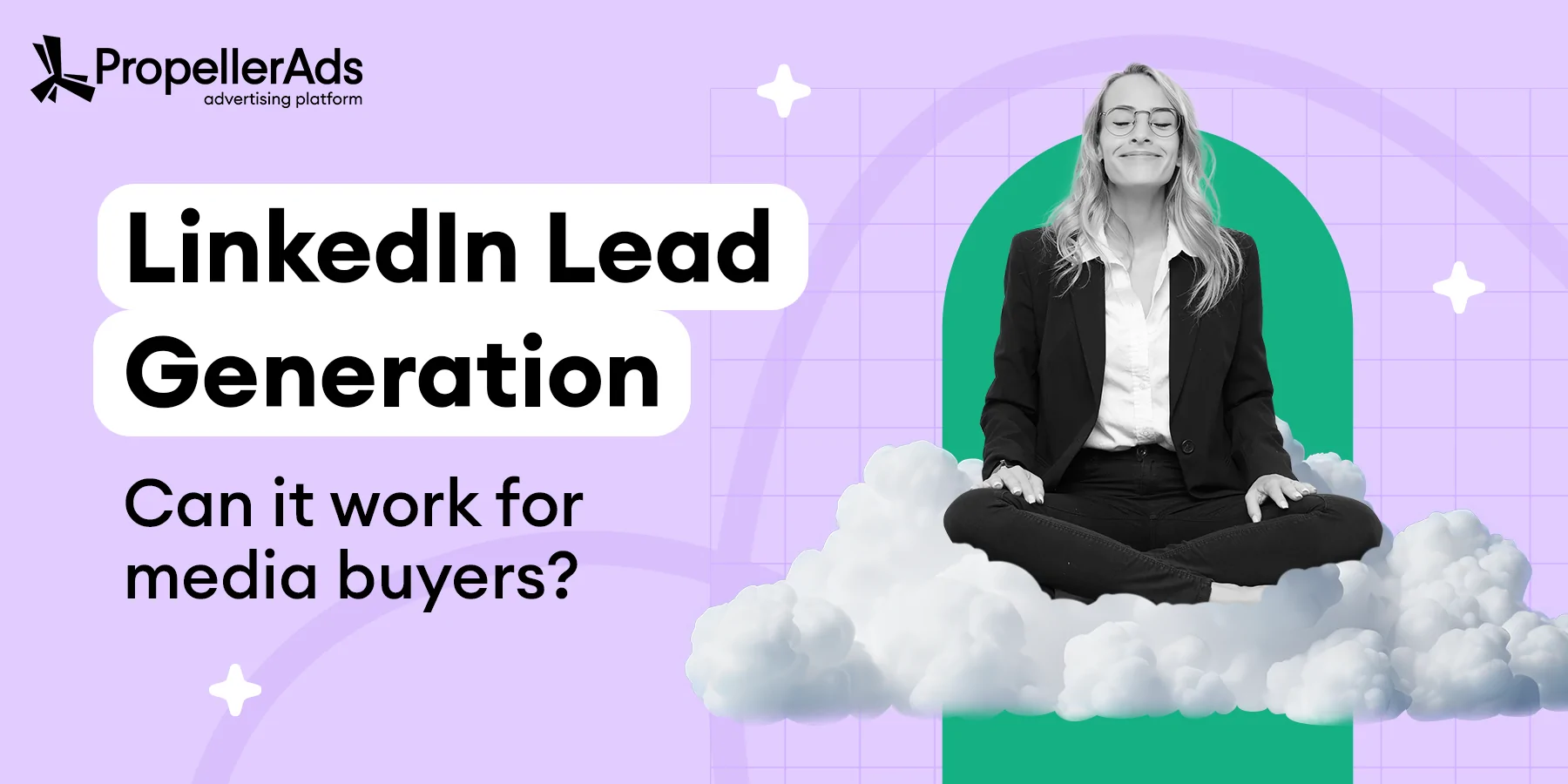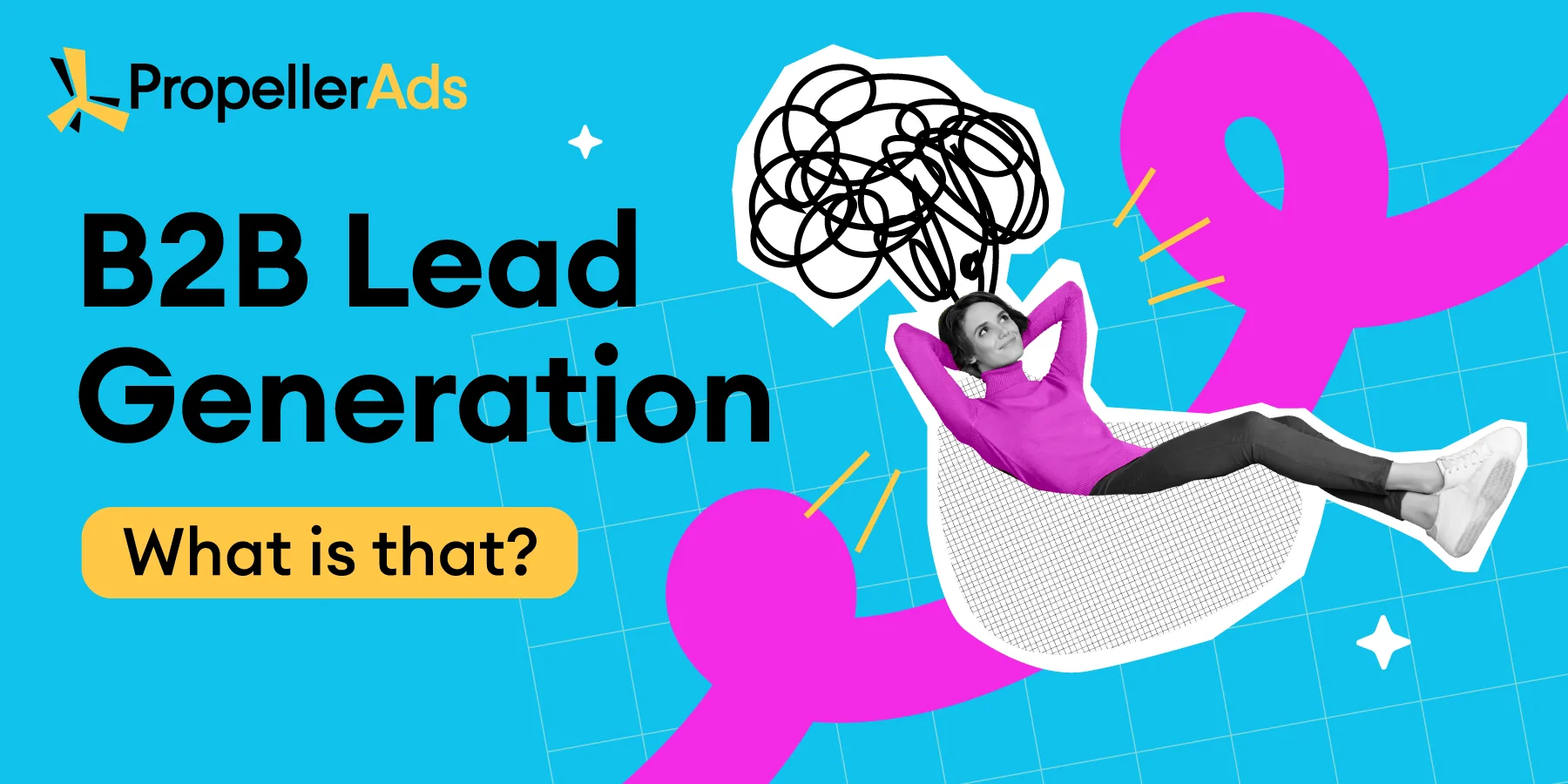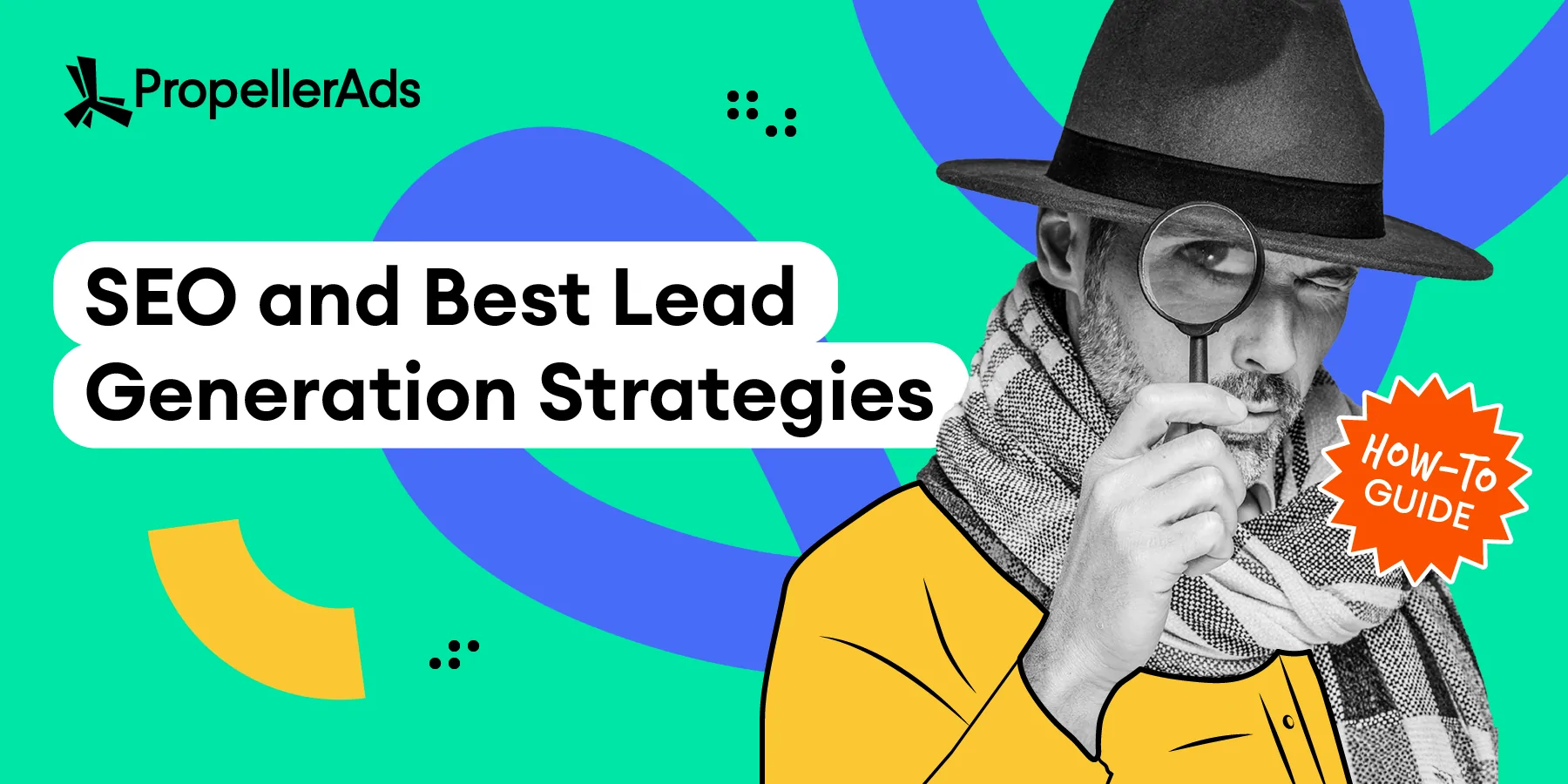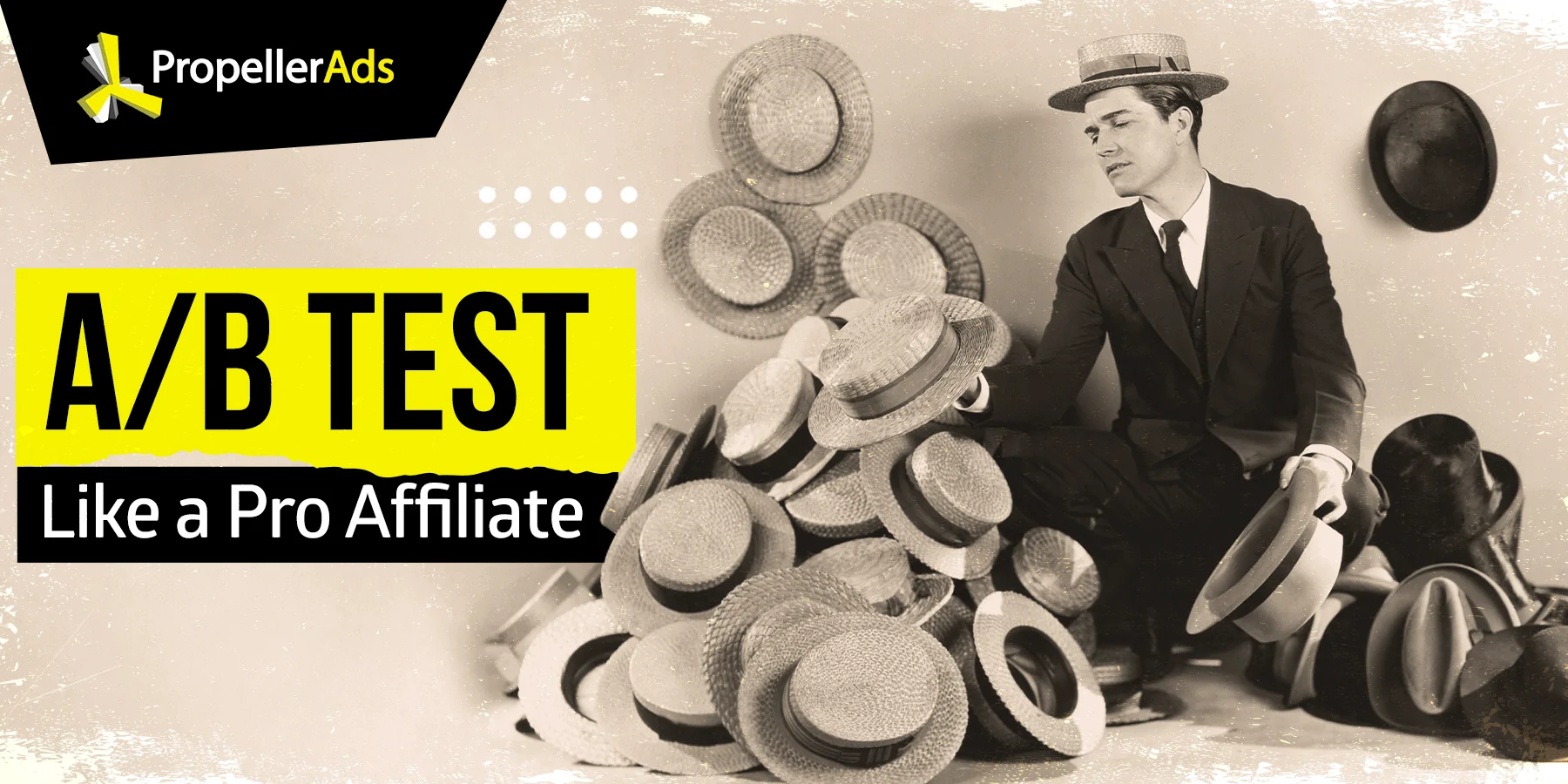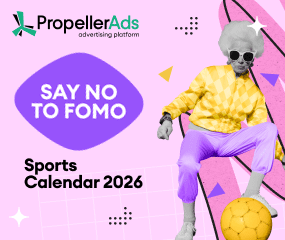What is a Lead? Definitions and Tips for Handling Different Types of Leads
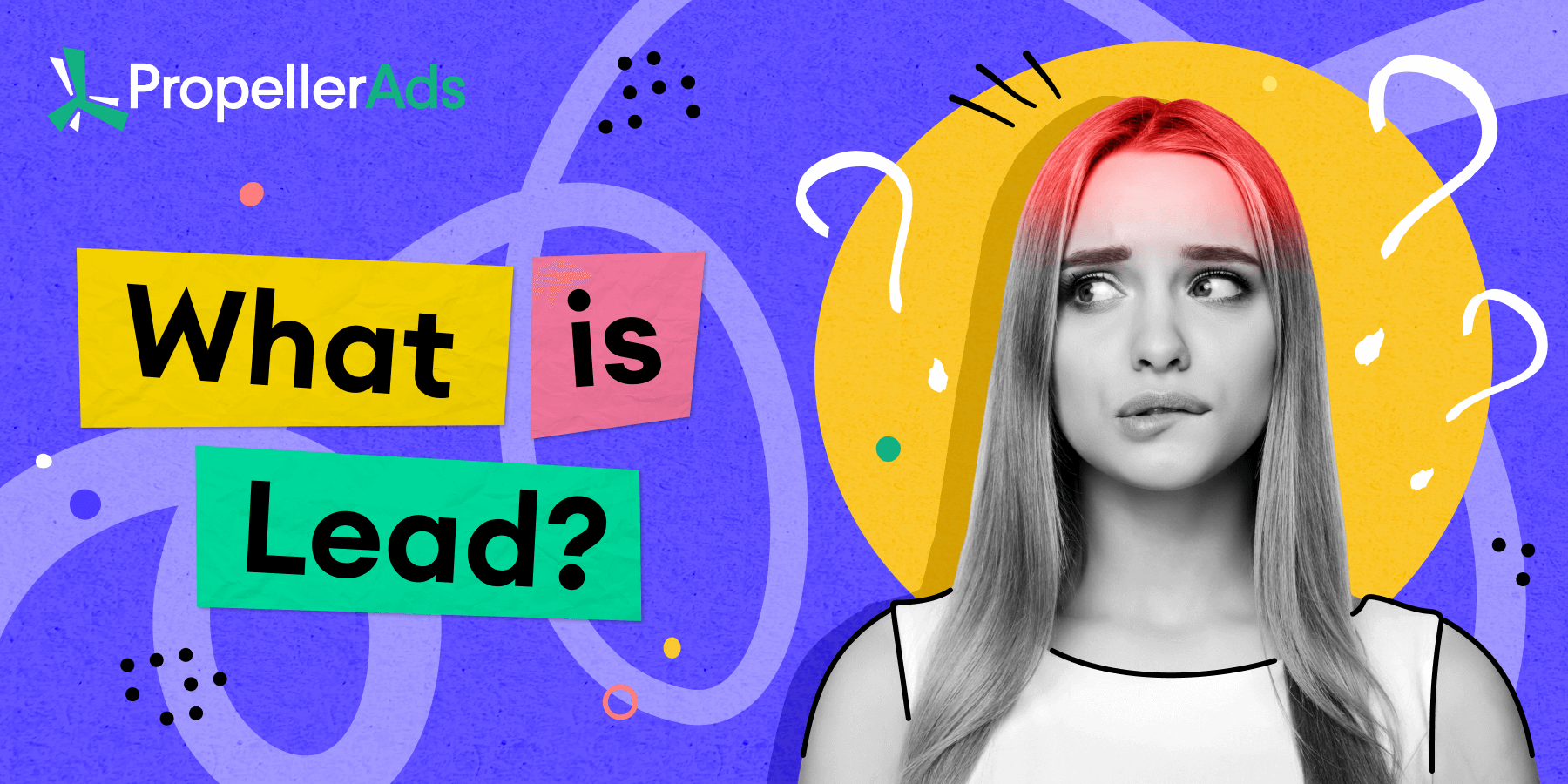
This post is also available in:
PT
ES
The word “lead” is thrown around a lot, but what exactly does it mean? The truth is that there’s not one singular definition.
There are sales leads and marketing leads, and sometimes leads are even called prospects!
With all this considered, it’s only natural to get confused about definitions. So, let’s break down what a lead really is!
TL;DR: A quick overview of leads
At its core, a lead is someone who has shown interest in your product or service and has provided their contact information.
Simple, right?
Now, if we look at what a lead is more deeply, it’s slightly more nuanced. We asked Anna Avramova, the Performance Team Team Leader at PropellerAds, about it, and here’s how she explains what a lead is:
“Leads are people with unique personal and contact details who are completely new to our client base. They can search for a service or product for themselves or on behalf of a company, sharing their contact data with a product or service they are interested in.
Sales teams then use this contact data to convert the lead, or a lead may convert themselves after engaging with marketing.”
In short, leads are people who share brand-new contact details with you. That contact data is then used directly by sales or indirectly by marketing – leading us to our next topic the difference between marketing leads and sales leads.
Marketing leads vs. sales leads
Now that we have a basic understanding of what a lead is, let’s dive deeper into the specific types of leads: marketing leads and sales leads.
What is a lead in marketing?
A marketing lead, or Marketing Qualified Lead (MQL), is a person who has engaged with a company’s marketing efforts but is not yet ready to buy.
For instance, they might have downloaded an e-book, subscribed to a newsletter, or attended a webinar. These leads have shown interest and engagement but need more nurturing before they are sales-ready.
What is a sales lead?
In contrast, a sales lead, or Sales Qualified Lead (SQL), is a person who has indicated a clear intent to make a purchase. They might have requested a demo, filled out a contact form expressing their readiness to buy, or directly contacted the sales team. Sales leads are further along in the buyer’s journey and require direct sales engagement.
Key differences between MQLs and SQLs
The main difference between MQLs and SQLs lies in their readiness to purchase.
- MQLs need further nurturing through marketing efforts, such as personalized emails and targeted content.
- SQLs are ready for direct sales interactions, including one-on-one meetings, detailed product information, and negotiations.
Understanding these differences helps businesses allocate resources effectively, focusing marketing efforts on nurturing MQLs and directing sales efforts toward closing SQLs.
Are there other types of leads?
Yes! There are different types of leads beyond just marketing and sales leads. Each requires unique strategies for engagement and conversion.
- Information Qualified Leads (IQLs)
IQLs are at the top of the sales funnel. They have shown interest by engaging with content such as blog posts, infographics, or videos. These leads are in the early research phase and are not yet considering a purchase. - Marketing Qualified Leads (MQLs)
As mentioned earlier, MQLs have shown interest through specific actions such as downloading resources or signing up for newsletters. They are more engaged than IQLs but still need more nurturing. - Sales Qualified Leads (SQLs)
SQLs are further down the funnel and have demonstrated clear intent to buy. They might have requested a product demo or directly contacted the sales team with purchase inquiries. - Product Qualified Leads (PQLs)
PQLs have used a product through a free trial or freemium model and are likely to upgrade to a paid version. They show strong intent to buy based on their product usage. - Service Qualified Leads (Service QLs)
Service QLs are existing customers who have indicated they are ready for additional services or upgrades. They are prime candidates for upselling and cross-selling.
How to qualify a lead
Qualifying a lead involves assessing whether a lead has the potential to become a customer. It helps prioritize your efforts on leads most likely to convert, saving time and resources.
For example, you might run a campaign that results in a high number of sign-ups. On paper, this is a good thing, but if those sign-ups don’t result in paying customers, you’ve essentially lost money on advertising to an irrelevant audience.
As Anna Avramova notes:
“Sign-up forms can be filled out by bots. So, if your metrics show a sudden boost of leads, make sure to double-check if they are real humans.”
Steps to qualify a lead
- Define your Ideal Customer Profile (ICP): Identify the characteristics of your ideal customers, including demographics, behaviors, and needs.
- Lead scoring: Assign values to leads based on their interactions with your content and their fit with your ICP. This helps in ranking leads by their potential to convert.
- Segmentation: Categorize leads into different segments based on their scores and characteristics for targeted marketing efforts.
- Nurturing: Engage with leads through personalized content, emails, and other marketing activities to move them down the funnel.
- Verification: Ensure the leads are genuine and not bots. Avramova also points out the importance of considering re-registrations: “Sometimes users forget their login credentials and create new accounts. We’re able to identify them and connect them with their existing account so we don’t mistakenly count them as new leads.”
How to generate leads
Generating leads is crucial, and there are effective ways to do it, especially with PropellerAds. Here are 4 steps we recommend for lead generation:
- Identify your audience: Know who you are targeting. Use detailed demographics and behavioral data.
- Create compelling ad content: Use strong headlines, engaging visuals, and clear CTAs to attract your audience.
- Use effective ad formats: Test different formats for the best results; for example, you can try push ads, popunder ads, and interstitial ads. Choose the format that best suits your audience and campaign goals.
- Optimize landing pages: Make sure your landing pages are user-friendly, with clear messaging and easy-to-fill forms to capture lead information.
Practical tips with PropellerAds
- Retargeting campaigns: Use PropellerAds’ retargeting options to re-engage users who have previously visited your site or interacted with your ads.
- A/B testing: Continuously test different ad creatives and landing pages to find the most effective combination.
- Advanced targeting: Use PropellerAds’ advanced targeting options to reach the most relevant audience.
How to convert leads into customers
Converting leads into customers is the ultimate goal of any lead generation campaign. Here are 7 steps to convert your leads:
- Nurture campaigns: Use personalized email sequences and content to keep leads engaged and move them closer to purchase.
- Social proof and testimonials: Share success stories and reviews to build trust and credibility.
- Incentives and promotions: Offer discounts, free trials, or limited-time offers to motivate leads to buy.
- Sales funnel optimization: Streamline your sales funnel to make the buying process as easy as possible.
- Use data analytics: Track and analyze lead behavior to refine your strategies and improve conversion rates.
- Personalize your approach: Segment your leads and tailor your communications to their specific needs and preferences.
- Build long-term relationships: Follow up with customers post-purchase, offer loyalty programs, and keep them engaged with regular updates and exclusive offers.
Wrapping up: Know your leads for effective campaigns
Understanding what a lead is, the different types of leads, and the differences between sales leads and marketing leads can make a huge difference in how you measure your campaigns’ success. For the best results, use information about leads to segment your audience, strengthen data analysis, and better understand your sales funnel.
As Anna Avramova summarizes:
“Measure high-level metrics to understand how efficient your lead generation campaigns are. And remember to conduct a deeper analysis to account for bots and re-registrations.”
Whether you’re just getting started or strategizing your existing lead-generation campaigns, you can use this guide to convert all your leads into loyal customers.
Come join us on Telegram for more insights and communications with fellow-affiliates!
